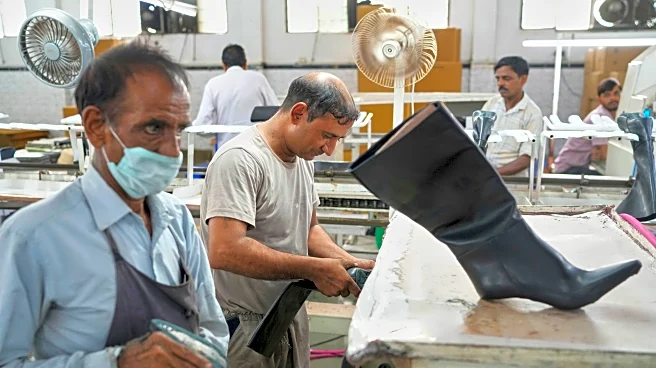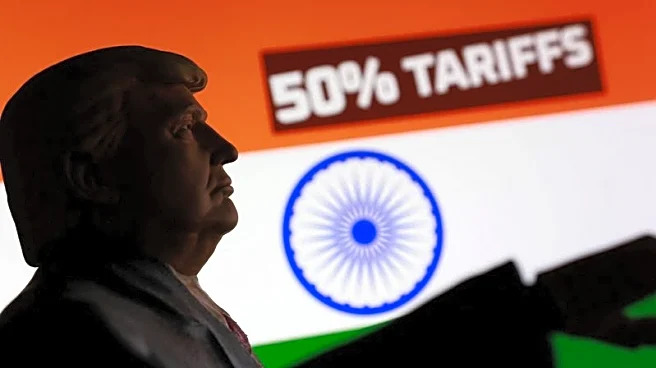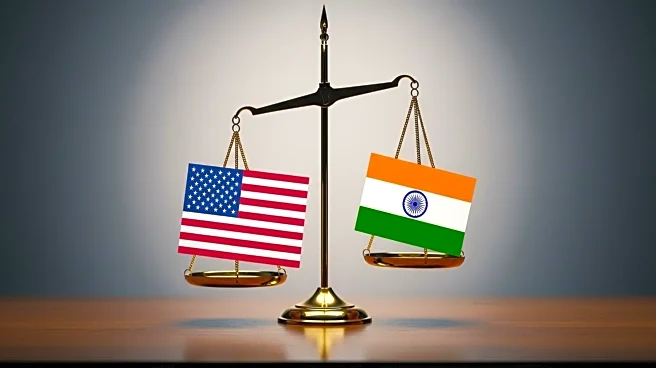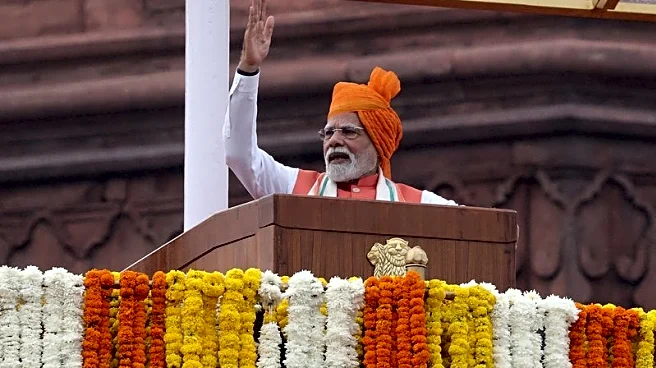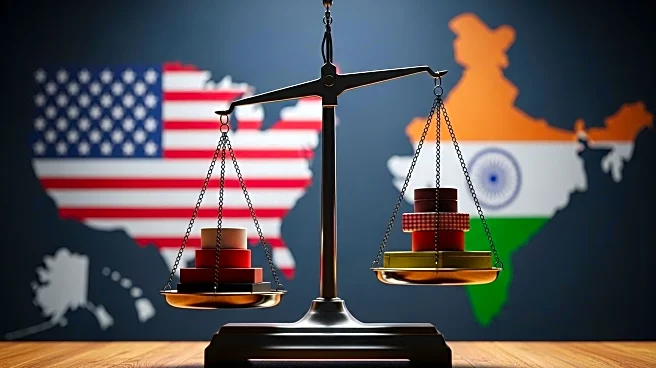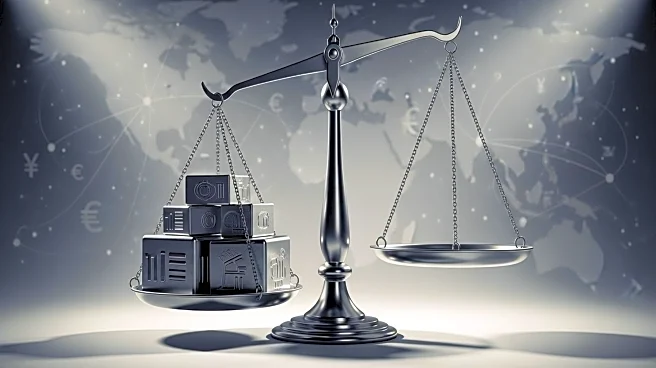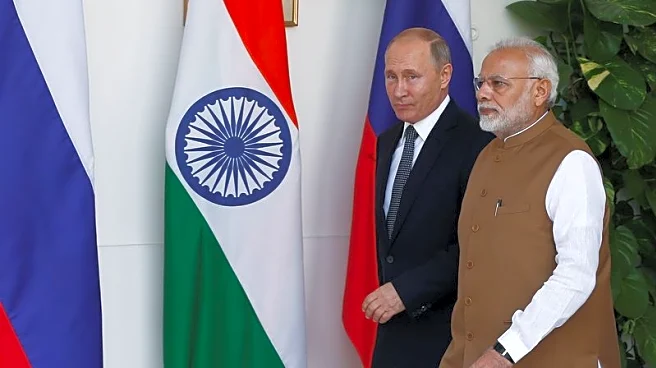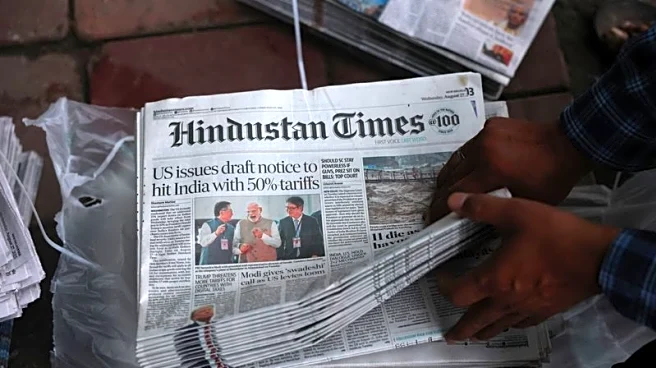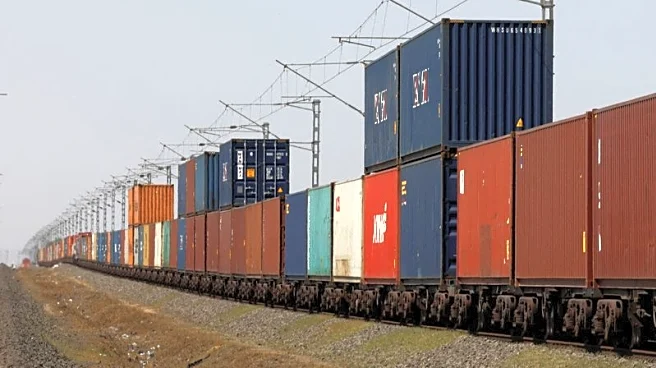What is the story about?
What's Happening?
The United States has imposed a 50% tariff on most Indian goods entering the US market, marking one of the highest rates globally. This development follows failed trade negotiations between the two countries, exacerbated by President Trump's announcement of additional tariffs due to India's purchase of Russian oil. The tariffs have raised concerns in Washington about the impact on regional stability and security, given India's strategic importance in the Indo-Pacific region. In India, there is significant worry about the potential negative effects on its fast-growing economy, particularly in sectors like textiles and jewelry, which are major exports to the US.
Why It's Important?
The imposition of high tariffs by the US on Indian goods could have substantial economic repercussions for India, which relies heavily on the US as its largest trade partner. The tariffs threaten to reduce India's exports to the US by over 40% by 2026, potentially leading to job losses in key sectors. For the US, while the economic impact may be less severe, the geopolitical consequences could be significant. The strained relations might hinder US plans to shift manufacturing from China to India and could affect the number of Indian students attending US universities. Additionally, the situation could alter geopolitical dynamics in Asia, potentially benefiting China.
What's Next?
There remains a possibility for India and the US to negotiate a trade deal, with India reportedly eager to reach an agreement. Such a deal could alleviate the economic pressures on India and restore some stability to the bilateral relationship. Both countries have shared interests in countering China's rise, which could incentivize them to resolve the trade dispute. However, domestic political pressures in India might complicate negotiations, as Prime Minister Modi faces significant challenges at home due to the tariffs.
AI Generated Content
Do you find this article useful?


